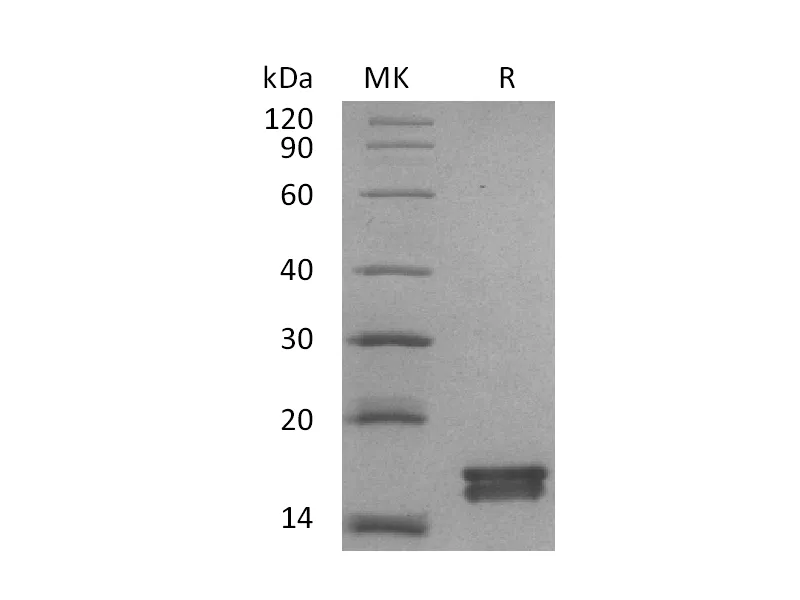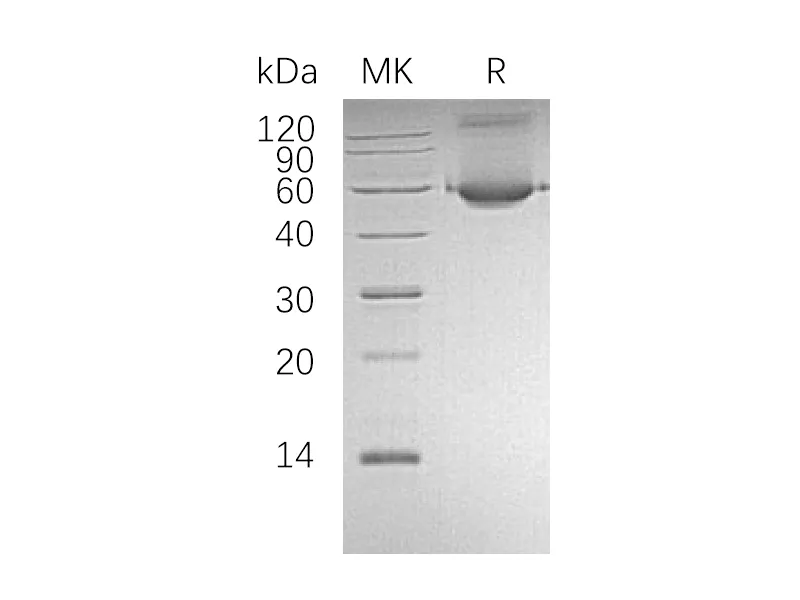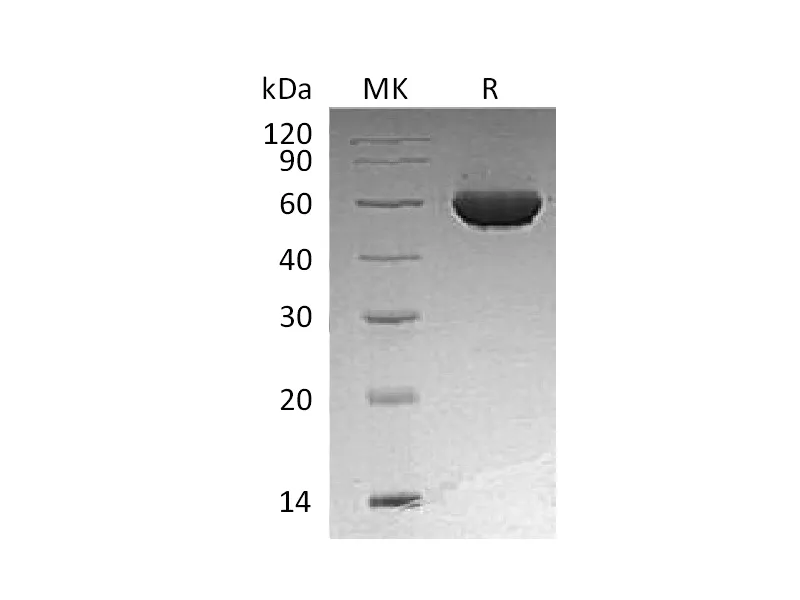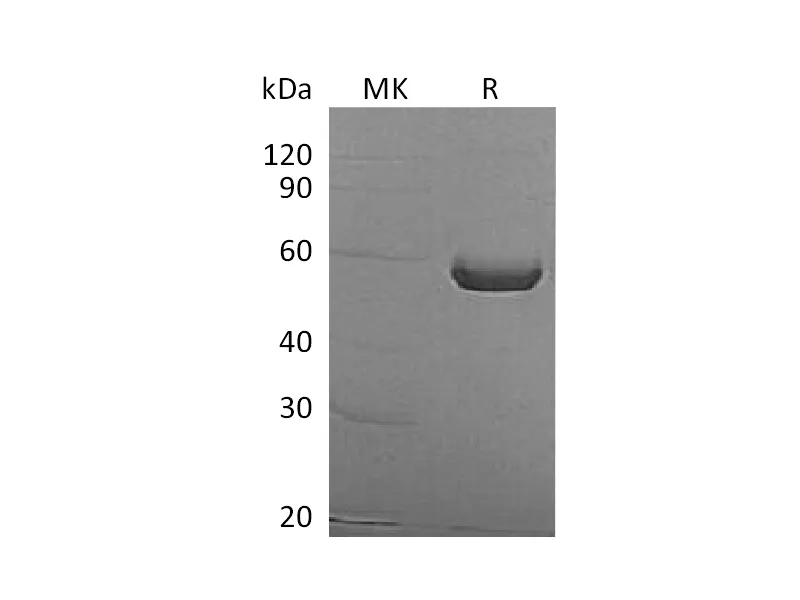Alternative Names
Tnfrsf14; Herpesvirus entry mediator; HVEM; TR2; TNF receptor-like molecule; ATAR; another TRAF-associated receptor; Tumor necrosis factor receptor superfamily member 14
Background
Mouse Protein Tnfrsf14, is a type I transmembrane protein belonging to the TNF receptor superfamily. It is tumor necrosis factor receptor superfamily member 14 and expressed on the surface of T cells during the resting state. Interaction of HVEM with TNF family member LIGHT co-stimulates T cells and promotes inflammation. HVEM also triggers inhibitory signaling cascade in effector T (Teff) cells and regulatory T cells (Tregs) as a ligand of B and T lymphocyte attenuator. Tnfrsf14 is detected in peripheral blood T cells, B cells, monocytes and in various tissues enriched in lymphoid cells. It has demonstrated that HVEM Ig is able to exert a significant antiviral effect against HSV-1 infection in vivo.
Note
For Research Use Only , Not for Diagnostic Use.




